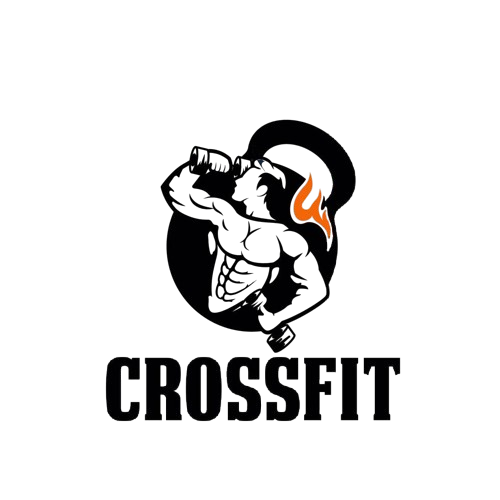CrossFit, a high-intensity fitness program that combines elements from various sports and types of exercise, has taken the world by storm. But when did this global phenomenon actually begin? The origins of CrossFit are as fascinating as the workouts themselves, tracing back to a time when fitness trends were dramatically different from today. Dive into the history of CrossFit to discover its inception and how it revolutionized the fitness industry, one WOD (Workout of the Day) at a time.
The Origins of CrossFit
The inception of CrossFit traces back to the late 1990s, when Greg Glassman, a former gymnast, conceived the idea to create a fitness program that was unlike anything else available at the time. Glassman’s vision was to combine elements from different disciplines such as gymnastics, weightlifting, and cardiovascular exercises into a single, cohesive workout regimen. This unique approach aimed at enhancing an individual’s overall fitness, emphasizing not just strength or stamina, but a holistic development across multiple physical competencies.
In 2000, the first CrossFit gym opened its doors in Santa Cruz, California, marking the official birth of the CrossFit movement. The program’s inclusivity and scalability attracted a diverse group of individuals, from elite athletes to everyday people looking to improve their health and fitness. The community aspect of CrossFit, where members support and motivate each other, quickly became one of its most celebrated features, fostering a sense of belonging among participants.
Over the years, CrossFit has evolved from a single gym in California to a global phenomenon, with thousands of affiliated gyms around the world. The CrossFit Games, introduced in 2007, have played a pivotal role in this expansion, showcasing the prowess of CrossFit athletes and pushing the boundaries of human performance. Despite facing criticism and challenges, CrossFit’s popularity continues to grow, testament to its effectiveness and the strong community it has built.
Further Insights into the Origins of CrossFit
Understanding the origins of CrossFit and its subsequent rise to popularity provides valuable context for its current global presence. CrossFit’s methodology, which emphasizes constantly varied, high-intensity, functional movements, has proven to be a game-changer in the fitness industry. This approach not only challenges the traditional gym routine but also prepares individuals for any physical contingency—not only the known but also the unknown. By doing so, CrossFit has redefined fitness as a measurable, observable, and repeatable phenomenon, with a strong emphasis on data and performance metrics.
Expanding the CrossFit Philosophy
As CrossFit continues to evolve, its philosophy remains centered on improving fitness levels through a community-driven approach. The emphasis on scalability makes CrossFit accessible to a wide range of individuals, regardless of their fitness level or background. This inclusivity, coupled with the rigorous training and certification process for CrossFit coaches, ensures that participants receive high-quality instruction designed to safely and effectively improve their fitness. The ongoing dialogue within the CrossFit community about best practices, safety, and training techniques reflects its commitment to excellence and continuous improvement.
| Year | Event | Significance |
|---|---|---|
| 1996 | Glassman’s First Functional Fitness Training | Prototype of CrossFit methodology |
| 2000 | First CrossFit Gym Opens | Birth of the CrossFit movement |
| 2007 | Introduction of the CrossFit Games | Global showcase of CrossFit athletes |
| 2010 | Reebok Partnership | Increased visibility and sponsorship |
| Ongoing | Global Expansion | Thousands of affiliated gyms worldwide |
The Role of Greg Glassman
Greg Glassman, a former gymnast, is widely recognized as the founding father of CrossFit, a fitness regimen that has revolutionized the way people think about health and wellness. His journey began in the late 1970s, but it wasn’t until 2000 that CrossFit, Inc. was officially established. Glassman’s innovative approach to fitness, which emphasizes high-intensity interval training, Olympic weightlifting, plyometrics, powerlifting, gymnastics, and other exercises, quickly gained popularity. His philosophy was simple yet profound: fitness is not just about the hours spent in the gym but about preparing the body for real-life situations and challenges.
Under Glassman’s guidance, CrossFit grew from a single gym in Santa Cruz, California, to a global phenomenon with thousands of affiliated gyms. He was instrumental in creating and nurturing a community that values strength, endurance, and the capability of the human body. Glassman’s commitment to creating a scalable workout program meant that CrossFit could be adapted for individuals at any fitness level, from elite athletes to those just starting their fitness journey.
Furthermore, Glassman’s impact extends beyond just the workouts. He played a crucial role in establishing the CrossFit Games, an annual fitness competition that determines the “Fittest on Earth.” This event not only showcases the incredible potential of human physical achievement but also fosters a sense of community and camaraderie among participants and spectators alike. Glassman’s legacy is a testament to his vision of a world where fitness is accessible, challenging, and, most importantly, empowering.
- Establishment of CrossFit, Inc. in 2000
- Development of a unique fitness philosophy
- Expansion of CrossFit to a global community
- Creation of the CrossFit Games
- Empowering individuals at all fitness levels
Glassman’s approach to fitness was revolutionary, breaking away from traditional gym workouts and focusing on functional movements and varied exercises. His methodology challenged the status quo, encouraging practitioners to push beyond their perceived limits. Glassman’s influence on the fitness industry is undeniable, and his vision for CrossFit has created a lasting legacy that continues to inspire and motivate individuals around the world.
First CrossFit Gym Opens
The inception of the CrossFit phenomenon can be traced back to the year 2000, when the first official CrossFit gym opened its doors in Santa Cruz, California. This was not just a gym; it was the birthplace of a fitness revolution that would eventually sweep across the globe. The founder, Greg Glassman, a former gymnast, had a unique vision to create a fitness regimen that was unlike any other, focusing on varied, high-intensity, functional movements. Glassman’s approach was groundbreaking, combining elements from gymnastics, weightlifting, and cardiovascular training into a cohesive and scalable workout program suitable for individuals of all fitness levels.
The opening of this facility marked a pivotal moment in the history of fitness, introducing a new methodology that emphasized not only the importance of physical strength and endurance but also the community aspect of working out. This gym became a testing ground for refining and developing the CrossFit methodology, which aimed to prepare its practitioners for any physical contingency—not only for the unknown but for the unknowable. The rapid success and popularity of this first gym led to the creation of an affiliate model, allowing for the rapid expansion of CrossFit gyms – known as “boxes” – worldwide.
Expanding the CrossFit Community
The growth of the CrossFit community was not just limited to the opening of new gyms. It also saw the development of a comprehensive training and accreditation system for coaches, the establishment of the CrossFit Games to test the fittest men and women on Earth, and the creation of an online community where athletes and coaches could share advice, workout plans, and motivational stories. This holistic approach to fitness and community building has been a key factor in the enduring popularity and influence of CrossFit.
| Year | Event | Impact |
|---|---|---|
| 2000 | First CrossFit Gym Opens | Start of the CrossFit Movement |
| 2001 | Launch of CrossFit.com | Global Reach Begins |
| 2007 | First CrossFit Games | Community Engagement |
| 2010 | Introduction of the Affiliate Model | Expansion of CrossFit Gyms |
| 2020 | Virtual CrossFit Games | Adaptation to Global Challenges |
The Evolution of CrossFit Games
The inception of the CrossFit Games in 2007 marked a pivotal moment in fitness competitions, transforming the landscape of strength and conditioning challenges. Originating as a small gathering in Aromas, California, the CrossFit Games were initially designed to identify the “Fittest on Earth.” Over the years, the competition has exponentially grown in both size and popularity, drawing athletes and spectators from around the globe.
By integrating a wide range of exercises, including weightlifting, gymnastics, and high-intensity cardio, the CrossFit Games have continuously evolved to test participants’ abilities across multiple fitness domains. This evolution has not only increased the diversity of the challenges but also the inclusivity of the event, with divisions for teenagers, masters, and teams alongside the individual competitions. The programming of the Games is known for its unpredictability, challenging athletes to be prepared for any task, thereby embodying the CrossFit philosophy of being “prepared for the unknown and the unknowable.”
The global reach and popularity of the CrossFit Games have been significantly amplified through media coverage and online streaming, making it accessible to a worldwide audience. This exposure has contributed to a surge in the number of CrossFit affiliates and practitioners, further solidifying the impact of the Games on the fitness industry. As a testament to its growing appeal, the CrossFit Games have transitioned from a niche event to a major sporting spectacle, offering substantial prize money and attracting sponsors from leading athletic brands.
Further Insights into the Evolution of CrossFit Games
The structure and format of the CrossFit Games have seen considerable changes to accommodate the increasing level of competition and the expanding field of athletes. From its humble beginnings with a handful of participants, the Games now feature a multi-stage qualification process, including the Open, Regionals (replaced by Sanctionals in recent years, and now back to a more global approach with Semifinals), and the final Games event. This tiered approach ensures that the athletes competing at the Games are truly among the elite in the sport.
| Year | Location | Number of Athletes |
|---|---|---|
| 2007 | Aromas, CA | 70 |
| 2010 | Carson, CA | 100+ |
| 2015 | Carson, CA | 300+ |
| 2019 | Madison, WI | 400+ |
| 2022 | Madison, WI | 600+ |
As the CrossFit Games continue to evolve, they remain at the forefront of defining functional fitness as a competitive sport. Each year, the Games not only push the boundaries of human performance but also inspire a global community to engage in fitness. The ongoing evolution of the CrossFit Games reflects the dynamic nature of the sport itself, continuously adapting and expanding to challenge and celebrate the capabilities of athletes worldwide.
Global Expansion of CrossFit
The global expansion of CrossFit is a remarkable tale of how a fitness philosophy can ignite a worldwide movement, transcending cultural and geographical boundaries. Born in a small gym in Santa Cruz, California, in 2000, CrossFit’s journey from an underground fitness regimen to a global phenomenon is nothing short of extraordinary. This growth can be attributed to its scalable model, which accommodates individuals of varying fitness levels, and its community-driven approach, which fosters a sense of belonging among its adherents.
As CrossFit’s popularity soared in the United States, its global footprint began to expand rapidly. By the mid-2000s, CrossFit affiliates, known as “boxes,” began appearing around the globe, from Europe to Asia, Latin America, and beyond. This international spread was facilitated by the internet and social media, platforms that allowed CrossFit enthusiasts to share workout tips, success stories, and foster global communities. The CrossFit Games, established in 2007, further propelled the international visibility of the brand, turning what was once a niche fitness trend into a global sporting event.
The essence of CrossFit’s global appeal lies in its foundational principles – universal scalability of workouts for people of all fitness levels, emphasis on functional movements, and the cultivation of community. This trinity not only makes CrossFit accessible to a wide audience but also adaptable to diverse cultures and environments. CrossFit’s global expansion is not just a story of spreading a fitness regimen, but of creating a worldwide network of communities bound by the pursuit of health and fitness.
Key Factors in CrossFit’s International Spread
Several factors have contributed significantly to the international spread of CrossFit, making it a global fitness empire:
- The adaptability of the CrossFit model to different markets and cultural contexts.
- Strategic use of digital platforms for community building and sharing of resources.
- The CrossFit Games, which have garnered international attention and participation.
- Word of mouth and personal success stories as powerful tools for organic growth.
- Partnerships and sponsorships with global brands, enhancing its visibility and reach.
Understanding the global expansion of CrossFit offers insights into the dynamics of spreading a fitness culture beyond its point of origin. It exemplifies how a combination of community, adaptability, and strategic use of digital media can propel a local idea into a worldwide movement. CrossFit’s story is ongoing, with its influence continually growing, shaping not just the fitness industry but also the lives of millions around the globe.
CrossFit’s Influence on Fitness Trends
The inception of CrossFit has undeniably reshaped the landscape of fitness, introducing a paradigm shift in how strength and conditioning programs are conceived and delivered. From its early days, CrossFit’s holistic approach to fitness, which amalgamates elements from high-intensity interval training (HIIT), Olympic weightlifting, plyometrics, powerlifting, gymnastics, and other disciplines, has permeated the broader fitness industry, influencing not only the design of workout regimens but also the development of gym facilities and fitness equipment.
One of the most significant impacts of CrossFit has been its role in popularizing functional fitness. This concept focuses on exercises that prepare the body for real-life movements and activities, as opposed to isolating specific muscles. As a result, gyms worldwide have started to incorporate functional fitness zones or equipment, such as kettlebells, sandbags, and sleds, which were once considered niche or specific to CrossFit. Moreover, CrossFit’s community-centric approach has led to a surge in group training sessions and classes in mainstream gyms, fostering a sense of camaraderie and mutual motivation among participants.
Another key contribution of CrossFit to the fitness industry is the emphasis on performance metrics. The practice of tracking workouts, times, and personal records has encouraged a culture of measurable progress and objective benchmarks for improvement. This has not only helped individuals set tangible fitness goals but also paved the way for the development of numerous fitness apps and technology aimed at tracking performance and health metrics. Furthermore, CrossFit’s influence extends beyond the gym, affecting nutritional guidelines and promoting a holistic view of health that encompasses diet, recovery, and lifestyle adjustments.
Further Insights into CrossFit’s Impact on Fitness Trends
In addition to the trends mentioned, CrossFit has also played a pivotal role in democratizing weightlifting, particularly among women. By showcasing the benefits of strength training and challenging preconceived notions about femininity and muscle, CrossFit has contributed to a broader acceptance and enthusiasm for lifting weights among female fitness enthusiasts. This cultural shift has led to an increase in the availability of weightlifting classes and programs designed specifically for women, further testament to CrossFit’s wide-reaching influence on fitness trends and perceptions.
| Trend | Pre-CrossFit | Post-CrossFit |
|---|---|---|
| Functional Fitness | Less common, niche | Widely adopted in gyms |
| Community Workouts | Individual focus | Group classes & community events |
| Performance Tracking | Less emphasis | Integral part of training |
| Technological Integration | Minimal | Apps & wearable tech for tracking |
| Women in Weightlifting | Less visible | Highly encouraged & celebrated |
Key Milestones in CrossFit History
The inception of CrossFit can be traced back to its founder, Greg Glassman, who developed a fitness program designed to enhance an individual’s competency at all physical tasks. CrossFit’s journey from a single gym in Santa Cruz, California, to a global fitness phenomenon showcases a series of significant milestones that have marked its evolution and widespread adoption.
The first official CrossFit gym opened its doors in 2000, quickly becoming a hub for innovative fitness methodologies. This pivotal moment laid the foundation for what would become a new era in the fitness world. By 2005, the number of CrossFit affiliates, fondly known as “boxes,” had grown to over 13, signifying a burgeoning community of enthusiasts and professionals alike. This growth was not just numerical; it represented a shift towards a more inclusive and comprehensive approach to fitness.
One of the most impactful milestones in CrossFit history came in 2007 with the introduction of the CrossFit Games. The inaugural competition aimed to find the “Fittest on Earth,” challenging participants with a diverse range of physical tasks. This annual event has since evolved into a global phenomenon, drawing athletes and spectators from around the world and significantly boosting CrossFit’s popularity and reach.
Another key development was the establishment of the CrossFit Level 1 Certificate Course, an educational program designed to disseminate the core principles and techniques of CrossFit to a wider audience. This initiative not only standardized CrossFit training but also empowered thousands to become certified trainers, spreading CrossFit’s methodology across continents.
The digital expansion of CrossFit also played a crucial role in its history. The launch of the CrossFit website provided a platform for sharing daily workouts, or “WODs” (Workouts of the Day), and fostered a global community of followers. It became a central hub for sharing knowledge, achievements, and motivational stories, further cementing CrossFit’s position in the fitness industry.
| Year | Milestone | Impact |
|---|---|---|
| 2000 | Opening of the first CrossFit gym | Laid the foundation for the CrossFit movement |
| 2005 | Number of affiliates grows to over 13 | Signaled the expanding community and popularity |
| 2007 | Launch of the CrossFit Games | Established a global competition, increasing visibility and participation |
| 2010 | Introduction of the CrossFit Level 1 Certificate Course | Standardized training and expanded the number of certified trainers worldwide |
| 2001 | Launch of the CrossFit website | Created a digital community and resource for enthusiasts and professionals |
The journey of CrossFit from a single gym to a global fitness empire is a testament to its effectiveness, adaptability, and the inclusive community it has fostered. Each milestone not only marked a significant achievement but also paved the way for future innovations and expansions. As CrossFit continues to evolve, it remains dedicated to its core mission of improving fitness and health through challenging and varied workouts.
In conclusion, CrossFit’s history is rich with pivotal moments and milestones that have shaped its path and contributed to its status as a leading fitness movement. From its humble beginnings to its current global presence, CrossFit has continually adapted and grown, all while maintaining a strong community of dedicated practitioners. As we look forward to future developments, the legacy of these milestones will undoubtedly continue to influence the direction and ethos of the CrossFit community.







